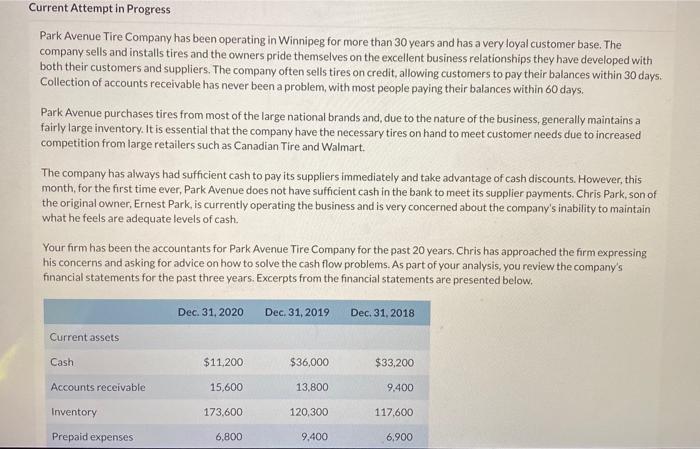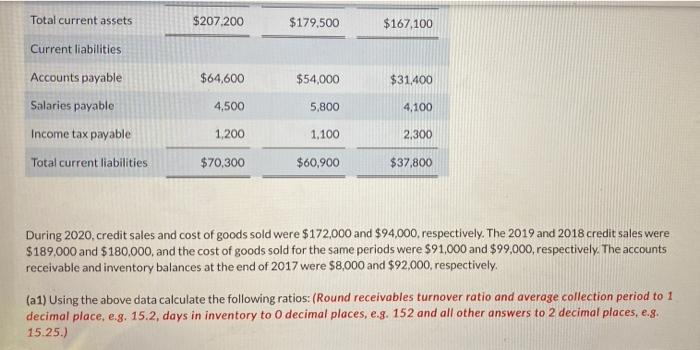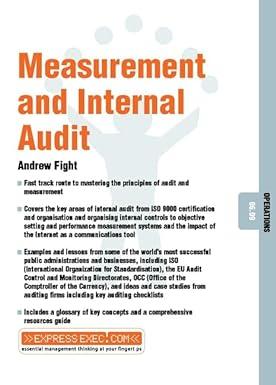attempted this but not sure if its correct. please help!

Current Attempt in Progress Park Avenue Tire Company has been operating in Winnipeg for more than 30 years and has a very loyal customer base. The company sells and installs tires and the owners pride themselves on the excellent business relationships they have developed with both their customers and suppliers. The company often sells tires on credit, allowing customers to pay their balances within 30 days. Collection of accounts receivable has never been a problem with most people paying their balances within 60 days. Park Avenue purchases tires from most of the large national brands and due to the nature of the business, generally maintains a fairly large inventory. It is essential that the company have the necessary tires on hand to meet customer needs due to increased competition from large retailers such as Canadian Tire and Walmart. The company has always had sufficient cash to pay its suppliers immediately and take advantage of cash discounts. However, this month for the first time ever, Park Avenue does not have sufficient cash in the bank to meet its supplier payments. Chris Park, son of the original owner, Ernest Park, is currently operating the business and is very concerned about the company's inability to maintain what he feels are adequate levels of cash. Your firm has been the accountants for Park Avenue Tire Company for the past 20 years. Chris has approached the firm expressing his concerns and asking for advice on how to solve the cash flow problems. As part of your analysis, you review the company's financial statements for the past three years. Excerpts from the financial statements are presented below. Dec 31, 2020 Dec 31, 2019 Dec 31, 2018 Current assets Cash $11,200 $36,000 $33,200 Accounts receivable 15,600 13,800 9.400 Inventory 173,600 120,300 117,600 Prepaid expenses 6,800 9,400 6.900 Total current assets $207.200 $179,500 $167.100 Current liabilities Accounts payable $64,600 $54,000 $31,400 4,500 5,800 4.100 Salaries payable Income tax payable 1,200 1.100 2,300 Total current liabilities $70,300 $60,900 $37,800 During 2020, credit sales and cost of goods sold were $172,000 and $94,000, respectively. The 2019 and 2018 credit sales were $189,000 and $180,000and the cost of goods sold for the same periods were $91,000 and $99,000, respectively. The accounts receivable and inventory balances at the end of 2017 were $8,000 and $92,000, respectively. (21) Using the above data calculate the following ratios: (Round receivables turnover ratio and average collection period to 1 decimal place, e.g. 15.2 days in inventory to 0 decimal places, e.g. 152 and all other answers to 2 decimal places, e.g. 15.25.) 2020 2019 2018 Current ratio 2.95 :1 2.95 1 4.42 :1 Quick ratio 0.38 :1 0.82 1.13 : 1 Receivables turnover ratio 11.7 times 16.3 times 20.7 times Average collection period 31.2 days 22.4 days 17.6 days Inventory turnover ratio 0.64 times 0.77 times 0.94 times Days in inventory 570 days 474 days 388 days e Textbook and Media Save for later Last saved 4 days ago Attempts: 0 of 2 used Submit










